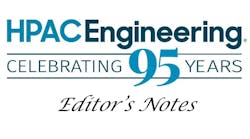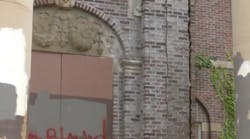Dom·i·col·o·gy (/ˈdäməˌkäləjē), noun: the study of the economic, social, and environmental characteristics relating to the life cycle of the built environment.
In other words, a new way to fight blight before buildings are even constructed.
If you’re not familiar with that term, don’t take it personally. Your vocabulary is not lacking. Domicology is a relatively new word coined by a trio of researchers at Michigan State University to describe their study of the life cycles of the built environment. According to Rex LaMore, Director of the Center for Community & Economic Development; George H. Berghorn, Assistant Professor of Construction Management; and M.G. Matt Syal, Professor of Construction Management, domicology “examines the continuum from the planning, design and construction stages through to the end of use, abandonment and deconstruction or reuse of structures.”
In lay terms, their vision is a built environment in which no buildings are ever demolished. Rather, when buildings reach the end of their economic or useful life, they can then be deconstructed, and the components reused or recycled. LaMore, Berghorn and Syal see this as a way to avoid blight in urban communities, a particular focus of their research. According to the program website, "domicologists":
- Recognize that manmade structures have a life cycle;
- Examine the life cycle continuum of the built environment and plan, design, construct, and deconstruct in order to maximize the reuse of materials and minimize the negative impacts of a structure's end of useful life;
- Identify innovative tools, models, policies, practices, and programs that can sustainably address a structural life cycle;
- Conduct research on the technical, economic, and policy challenges present in a structure's life cycle and seek to reduce the negative social, economic, and environmental impacts associated with structural abandonment.
Clearly, this takes Reduce-Reuse-Recycle (and, for some, Refuse-Reduce-Reuse-Repurpose-Recycle) to a whole new level. For those of us in the HVACR industry, end-of-life AC equipment has always been recyclable material at best, and used equipment – even if in working condition – has also frequently been discarded. Even on green building projects, where we give credit for diverting construction and demolition waste from landfills, we’ve seen AC equipment go the local Mt. Trashmore. If Domicology is to succeed, we must all start looking for alternatives to simply abandoning equipment that is no longer wanted. Merely scrapping out the copper and aluminum doesn’t really solve the problem…
A regular contributor to HPAC Engineering and a member of its editorial advisory board, the author is a principal at Sustainable Performance Solutions LLC, a south Florida-based engineering firm focusing on energy and sustainability.









